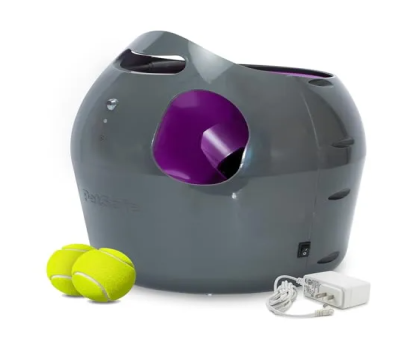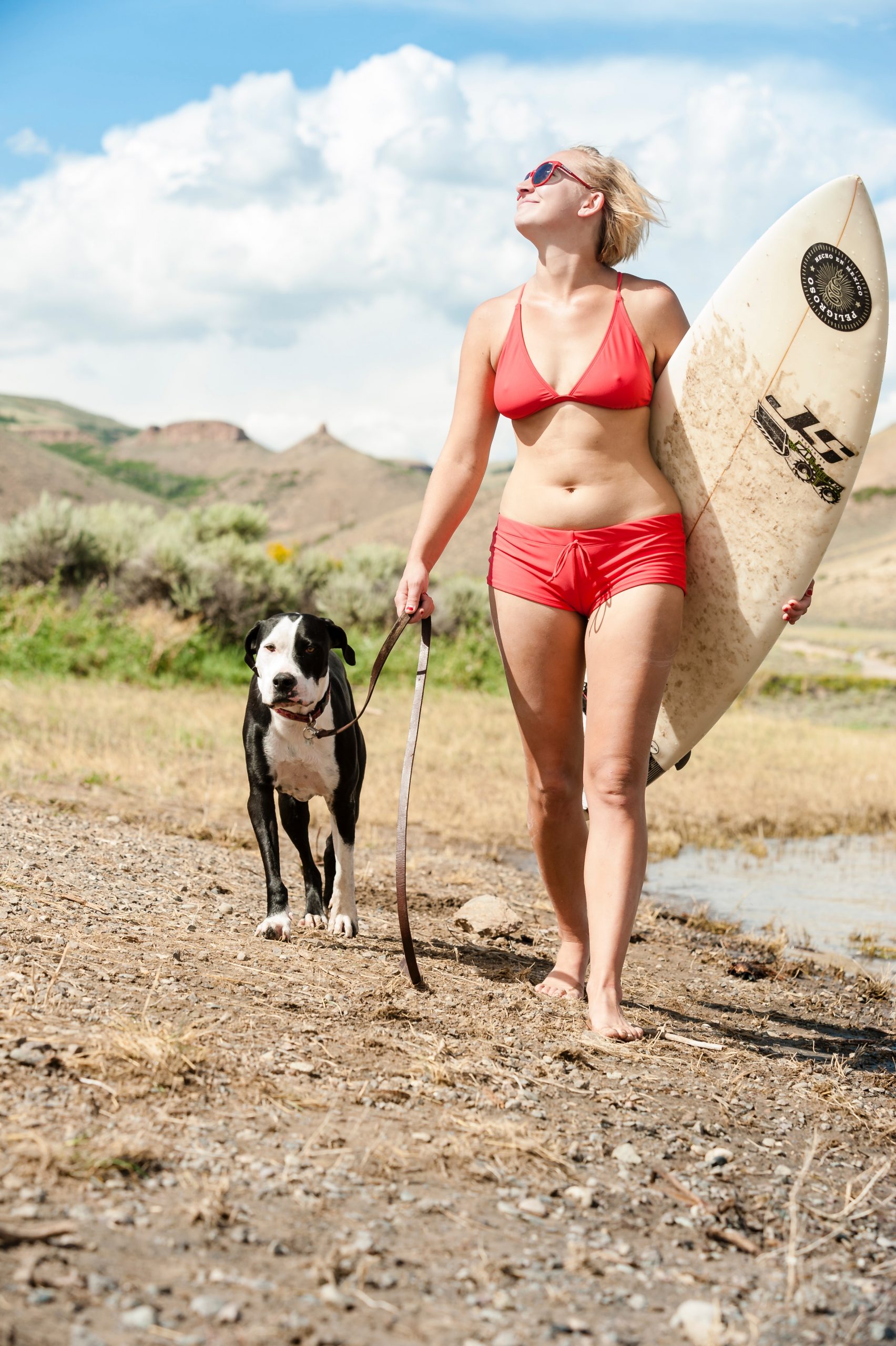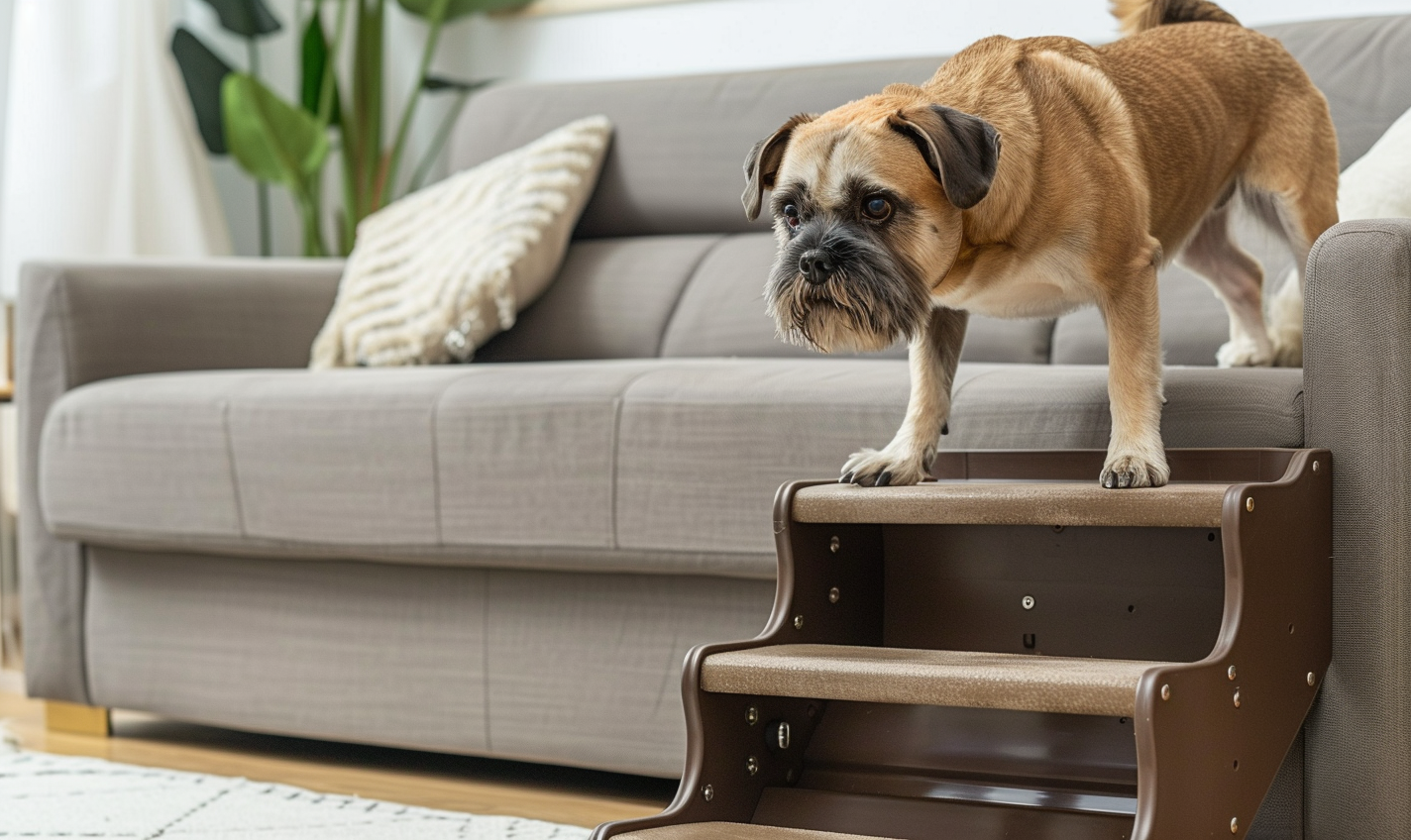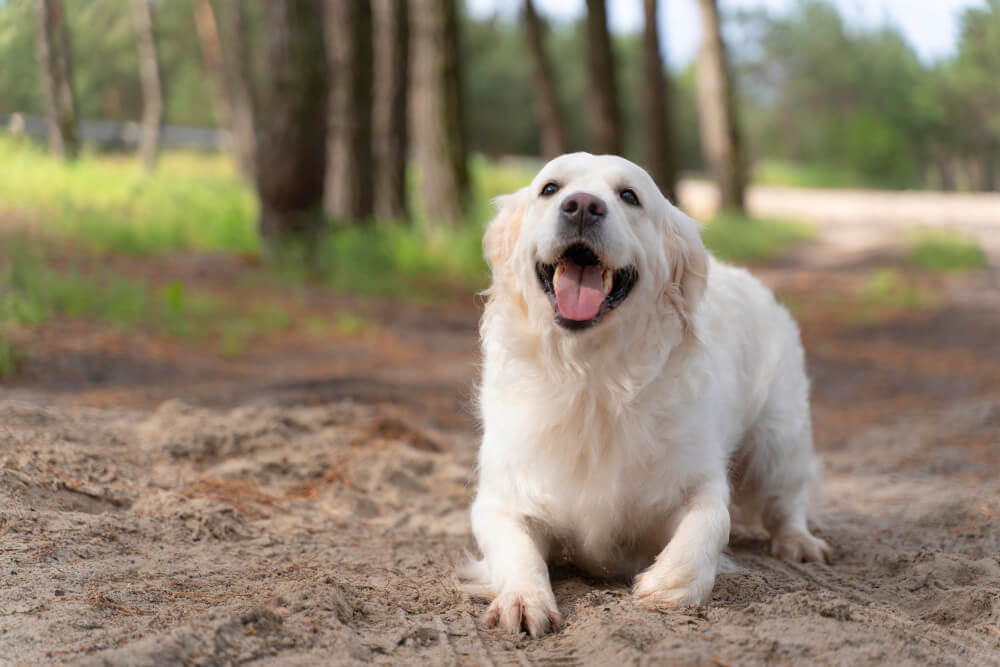As the temperatures soar, you may be eagerly planning some outdoor adventures with your four-legged friends. Yet while the season is rife with opportunities for fun in the sun, your older dog needs a little extra attention this time of year.
FAQ
Pet insurance is a health insurance policy specifically for your pet. It helps cover the cost of veterinary care, including accidents, illnesses, and preventive care, depending on the plan you choose.
Now is the best time to get pet insurance because veterinary costs are rising, and having coverage can provide financial peace of mind. Early enrollment often means better rates and coverage before any pre-existing conditions develop.
Before heading out with your pooch, consider the following summer safety tips so you and your canine companion can fully enjoy these dog days of summer.
Understand dogs can overheat.
When we overheat, we know to seek shade and grab a drink of water–and for the most part, dogs know to do the same. It is important to note, though, that our furry friends are naturally more prone to heat-related injuries than we are. Here are three reasons why:
- Dogs have minimal sweat glands. Dogs only have a few sweat glands which are chiefly found underneath their paws. In fact, dogs rely on evaporative cooling techniques to dissipate heat, which is primarily achieved via panting. Panting is effective for dogs most of the time, but with a combination of hot temperatures and intense activities, dogs can easily and quickly reach their limits. This is especially true for senior dogs, as they can exhaust more quickly.
- Some breeds are at a disadvantage. Brachycephalic or flat-faced breeds are automatically at risk for overheating simply due to their facial conformation. With shortened airways and narrowed nostrils, pugs, Shih Tzus, bulldogs, and other similar breeds need close monitoring during the warmer months.
- Dogs are loyal. Canine devotion is one of the reasons why we love dogs so much. If your pup is like most, he probably wants nothing more than to be by your side 24 hours a day. This can include accompanying you on that hilly, 5-mile run. Don’t rely on your pooch to set his own limits and never force your dog to exercise on a hot day, as he may not know when to stop.

Table of Contents
Mind your dog's health status.
While aging does not automatically lend a medical diagnosis, older dogs are unfortunately susceptible to age-related diseases. Since many of these conditions can cause difficulties with breathing and heat regulation, knowing your pup’s ailments can help you better protect your dog. Let’s take a look at a few common diseases that can affect senior dogs–and how these can lead to additional problems when temperatures rise.

- Heart disease: Degenerative changes in a dog’s heart may eventually lead to heart failure which can cause a build-up of fluid in the lungs. Affected pets may exhibit signs like coughing, increased respiratory rate, or exercise intolerance, all of which may be exacerbated by the heat.
- Laryngeal paralysis: This is a common condition of older, large breed dogs and causes a partial airway blockage, leading to noisy and often labored breathing. These pups may show signs of excessive panting even in milder temps.
- Osteoarthritis: This painful joint condition causes varying degrees of mobility challenges. While no dog likes to walk on hot pavement, arthritic pups may be more susceptible to paw-pad burns if they are unable to lift their feet quickly while walking. Dogs with joint disease will also have difficulty rising and moving to shadier areas on hot, sunny days.
- Hypothyroidism: Thyroid disease and other endocrine disorders can lead to changes in skin integrity and temperature regulation, possibly putting pets at risk for sunburn or overheating.
- Cancer: Depending on the type and severity of cancer, numerous body systems may be affected, leading to overall immunosuppression. For instance, affected pets may have exaggerated responses to bee stings or difficulty with wound healing.
Quick disclaimer: if you decide to purchase a SpotOn virtual fence for your pup through my referral link, I’ll earn a small commission at no extra cost to you. Also, this is not a sponsored review. I never delete the negative comments and talk about negative things compare to many other reviews.
Due to ongoing supply issues with electronics, the SpotOn fence might not occasionally go out of stock. If you see it available and decide it’s right for you, I recommend grabbing it right away.

Never leave your dog in the car on a warm day.
This one is a no brainer, and in many states, it’s illegal. Although it may be tempting to make a quick grocery or post office run with your pooch, there is simply no excuse when it comes to pets and hot cars. According to a study reported by the American Veterinary Medical Association (AVMA), “The temperatures in [cars] parked on a hot, but partly cloudy day, exceeded 125 degrees Fahrenheit within 20 minutes.” An additional study supported the theory that the temperature of a car’s interior steadily rises with time. Don’t be fooled into thinking that cracking the car windows will do the trick to keep your pet cool — these studies found that opening the windows a tad had minimal effect on the inside temperature.

Choose appropriate exercise
We all know that regular exercise is crucial for overall wellness, but when it comes to senior dogs, we must consider a variety of factors to keep them both safe and healthy during the summer months. If you live in a hot climate, avoid mid-afternoon romps and opt for early morning or late evening sessions to keep your pet cool. If walks are your dog’s fancy, choose shady trails and avoid hot sidewalks. If the forecast calls for an afternoon drizzle, plan your walk after (or during) the shower for a refreshing treat. For dogs that love the water, swimming is an ideal summer sport.
Be your pet’s advocate and encourage your companion to exercise and play, while keeping reasonable expectations. If you are considering a new exercise regimen for your friend, be sure to consult with your veterinarian first.
Forego the fireworks
In many states, folks play with fireworks well after the Fourth. Did you know that more pets go missing on Independence Day than any other day of the year? Even senior dogs with signs of hearing loss may react unexpectedly to a loud boom from a firework, so don’t assume your aging pup is immune to this common noise aversion. Play it safe and refrain from bringing your canine companions to summer celebrations.
Schedule a grooming session
Keeping your dog prim and proper is ideal year-round, but as the weather warms, you may be tempted to give your furry friend a complete shave-down. While it may seem logical to remove your pet’s hair in order to keep them pet cool, avoid shaving your pet completely. A dog’s fur coat not only works as an insulator to help maintain normal body temperature, but it also protects your pet from the sun’s harmful ultraviolet rays. While haircuts are encouraged, especially if your dog has a thick or dark fur coat, no pet should be shaved to the skin. If your senior pet has difficulty standing for long periods of time or may not otherwise be a good candidate for a grooming appointment, contact your groomer to see if they can make accommodations. If you are planning to groom your pet at home, consider a harness like this one to help your pet stand comfortably during primping.
Choose shade.
As we age, our skin naturally loses its elasticity, rendering it thin, sensitive, and more susceptible to the sun and other environmental hazards. The same goes for our pets. While any furry friend can fall victim to sunburn, senior dogs are especially at risk, particularly those with short coats and light-colored fur such as pitbull terriers and dalmatians. A dog’s belly, underarms, and muzzle are especially susceptible to sunburn, so keep a close eye on these areas. Always provide a shaded place for your pet, keeping in mind that these areas may change throughout the day. If you absolutely can’t keep your pet out of the sun, consider a pet-safe sunscreen, but avoid products containing zinc oxide, which can have toxic effects if ingested.
Beware of algae.
Swimming is a great form of exercise for senior dogs who suffer from painful joint diseases like osteoarthritis. The combination of a low-impact activity along with a refreshing way to stay cool makes for an ideal summer treat. But, if you and your pet frequent your local pond or lake, get familiar with cyanobacteria, also known as blue-green algae. This unique plant-like organism is typically harmless until it overgrows or “blooms,” contaminating the surrounding water with high levels of phosphorous, nitrogen, and other potential toxins. Affected pets (and people!) may become severely ill if they ingest the tainted water, especially those with underlying disease. Before heading out to your favorite swim spot with your dog, check your local reports for blue-green algae levels.
Get saltwater smart.

A salty dog may be your cocktail of choice, but it is not an ideal scenario for your pooch. On a hot summer day, a dip in the ocean can be a much-needed reprieve for people and pets alike, but if your pup drinks seawater to quench his thirst, he may actually cause further dehydration, along with many other unpleasant gastrointestinal and neurological signs.
Senior pets with underlying kidney or urinary problems require extra attention when it comes to monitoring for saltwater ingestion, as these pets already struggle to maintain adequate hydration. When you add the excess sodium from seawater, compromised canines may become severely ill. If you are planning a beach day with your furry friends, provide plenty of fresh water and encourage them to drink often.
Plan ahead.
Proud owners of senior dogs know that life moves at a different pace as our pets age. Their gait slows down, they sleep a bit more, and they may not always be up for that long, evening walk. As the temperatures rise, our older companions often require additional considerations. If you are planning an outing this summer with your senior pup, be prepared by having the following on hand:
- Your pet’s medications or supplements
- An excess of fresh water and collapsible water bowls
- Umbrellas for shade
- Thermometer — the normal rectal temperature for a dog is between 99.5 and 102.5
- Towels — to wet down and place on your dog if he overheats
- Information for the nearest veterinary clinic
- Your pet’s medical records
- Flexibility
It’s natural to want your canine sidekick to join in on your plans, but often it is best — and safest — if they skip out on the summer fun. If you are ever unsure how your senior dog will handle a summer outing, consider leaving them safe, sound, and comfortable at home.
Pros and Cons at Glance
- Financial Protection
- Access to Quality Care
- Peace of Mind
- Preventive Care Options
- Monthly Premiums
- Exclusions and Limitations
- Upfront Payments
- Complex Policies
Advantages of Pet Insurance

Pet insurance helps cover the cost of unexpected veterinary bills for accidents and illnesses, protecting you from significant out-of-pocket expenses. Monthly premiums make it easier to budget for your pet’s healthcare needs.
Insurance allows you to afford a wider range of treatments and procedures, including emergency care, surgeries, and specialist consultations. Some plans include coverage for preventive care such as vaccinations, dental cleanings, and annual check-ups.
Disadvantages of Pet Insurance

The need to pay monthly premiums can add up, and if your pet remains healthy, you might feel like you’re not getting your money’s worth. Pet insurance typically does not cover pre-existing conditions, which can be a significant drawback if your pet has ongoing health issues.
Certain policies exclude hereditary or breed-specific conditions, limiting the coverage available. Most pet insurance plans operate on a reimbursement basis, meaning you must pay vet bills upfront and then wait for reimbursement, which can take time.
Author
Ryan
Writer


